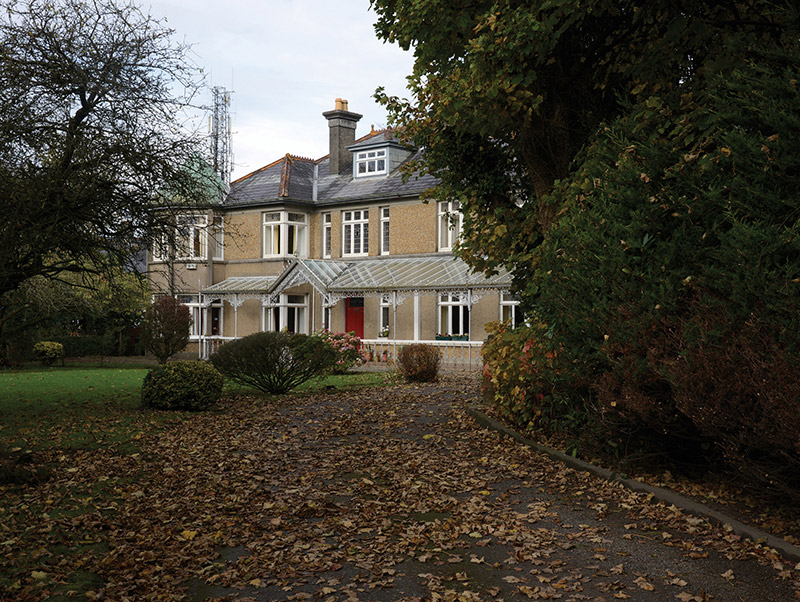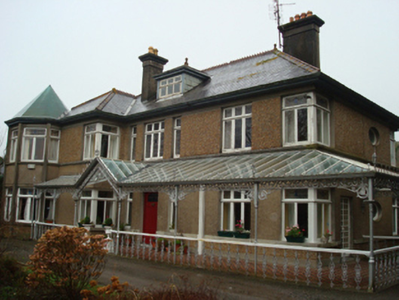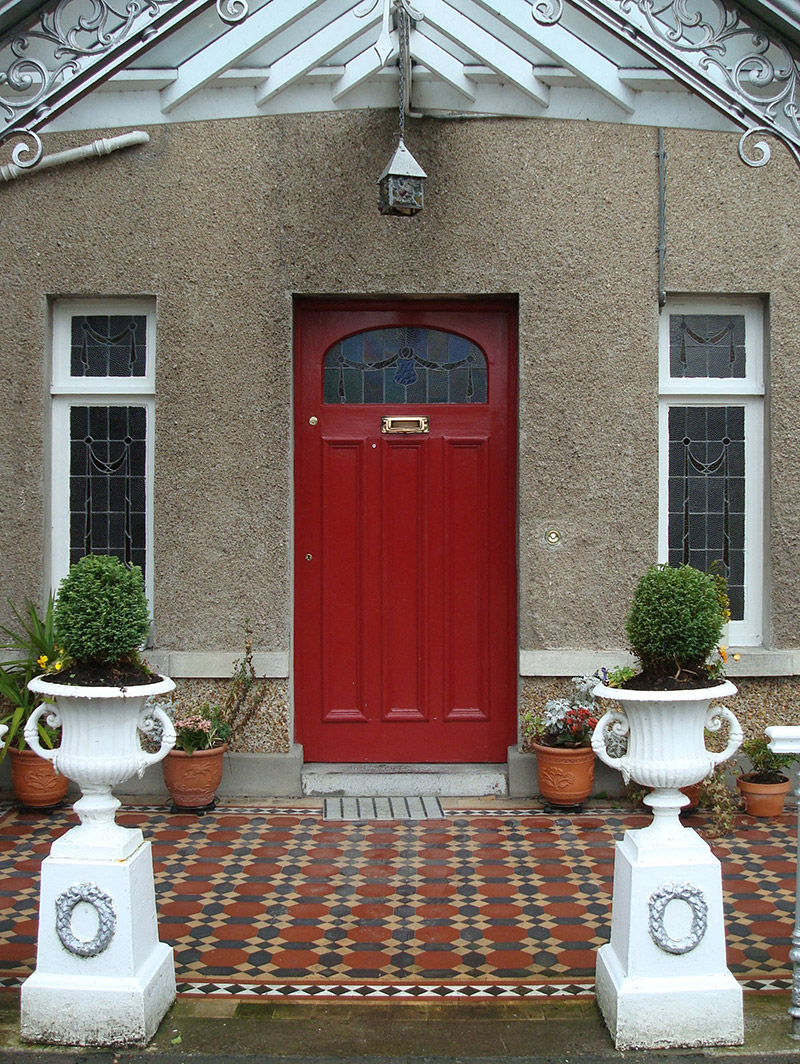Survey Data
Reg No
31204026
Rating
Regional
Categories of Special Interest
Architectural, Artistic, Historical, Social
Original Use
House
In Use As
House
Date
1925 - 1935
Coordinates
124298, 318858
Date Recorded
09/12/2008
Date Updated
--/--/--
Description
Detached five-bay two-storey house with dormer attic, built 1928-30, on an L-shaped plan with two-bay two-storey projecting end bay including single-bay two-storey turret on an octagonal plan; two-bay two-storey side elevations. Hipped banded slate roof on an L-shaped plan centred on hipped slate roof to window opening to dormer attic, perforated crested roll moulded terracotta ridge tiles with terracotta finials to apexes, rendered chimney stacks having corbelled stepped capping supporting terracotta or yellow terracotta tapered pots, and cast-iron rainwater goods on slightly overhanging timber box eaves. Gritdashed roughcast walls on rendered plinth with rendered band to eaves. Square-headed central door opening with dragged cut-limestone step threshold, and concealed dressings framing glazed timber panelled door. Square-headed flanking window openings with concrete sill courses, and concealed dressings framing timber casement windows having stained glass panels. Square-headed window openings centred on square-headed window opening in tripartite arrangement (first floor) with concrete sill course (ground floor) or thumbnail beaded concrete sill course (first floor) and concealed dressings framing timber casement windows centred on timber casement windows having stained glass panels. Set back from street in landscaped grounds with rendered piers to perimeter having pyramidal capping supporting wrought iron double gates.
Appraisal
A house erected for Patrick Joseph Mulligan (b. 1900), solicitor (Shaffrey 2008), representing an important component of the early twentieth-century domestic built heritage of Ballina with the architectural value of the composition confirmed by such attributes as the compact plan form centred on a canopied doorcase; and the very slight diminishing in scale of the openings on each floor producing a feint graduated visual impression with the principal "apartments" defined by a polygonal turret. Having been well maintained, the elementary form and massing survive intact together with substantial quantities of the original fabric, both to the exterior and to the interior where Art Nouveau-like stained glass highlights the modest artistic potential of a house making a pleasing visual statement in Bury Street.





